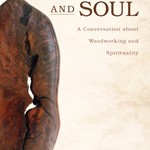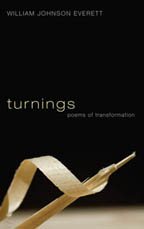Living in one of the world’s great temperate hardwood forests, I become familiar with the trees around me. Not all, by any means, because we have such an expanse of species, but I do know those that can be transformed into the bowls, turnings, cabinetry, and sculpted artifacts that release their beauty and strength into our realm of use or beauty. Trees talk to each other, support each other in the wind, share their resources, and dance their seasons of green, gold, red, grey, and brown. Some became old friends whose signs of age raise our concern, whose loss of limb or crown distress us, or whose seedlings volunteer to fill the spaces left by those long gone.
Over the centuries, they have adapted to their environment and the slow epochal changes of ice ages and hot or humid times. They live at an evolutionary pace. But we humans have dragged them into the faster tempo of our history. As we have spread across the globe, we have brought sicknesses and parasites that have overcome their natural resistance. The chestnut blight from China reduced the mighty chestnut to struggling sprouts among the stumps that testify to their former glory. The Dutch elm disease took down those stately witnesses to our streets and parks. The wooly adelgid decimated our balsams. The hemlock adelgid is still making its way through the moist coves and streambeds of these mountains. And now the emerald ash borer has made its way to us from Michigan, where it arrived from Asia in some wooden pallets. Sometimes, given time, the trees can stimulate their own resistance, but other times we lose them entirely, except for specimens in labs and arboretums.
We identify with these trees. They inspire us with their strength. patience, and endurance. Tended well, they supply us with things of use and beauty. This winter we will have to cut down one of our friends, whom the borer is reducing to a skeleton. I share with you my lament as we watch its demise, among many others, and hope that some of it can find its way into a new life.
My ash trees are dying,
their leaves are faces of grief,
they are weeping bark,
my saw is chewing them into firewood,
they are rendered into ashes in our stove,
I am turning their limbs into plates and bowls,
their trunks into table legs and planks..
The emerald beetle eating out their life
rings their trunks with burrows for its larva,
girdling them with living death.
The borers will move on,
the ash their only home.
They do not know
of baseball bats and tables,
rakes and chairs and hoes.
They eat,
lay eggs,
hatch,
and leave destruction in their wake.
Why do I stand among the ashes in amazement?
Did we not bring these predators?
Is our destruction not the same?
Will there be survivors
who will weep for me?







 Red Clay, Blood River
Red Clay, Blood River
I resonated completely with your comments on the ash borer and ash trees. I have a lovely ash tree (17 years old) providing shade to my front windows during the afternoon, allowing me to grow hanging baskets of shade loving flowers. Alas, this year the disease reached a climax that thinned out the tree and will probably bring its demise during the next year or so. There are about 20 ash trees in various stages of dying in this subdivision, and thousands in the Fond du Lac, WI area, being replaced since 2014 from too small city budgets. This leaves much to reflect upon in the relationship between trees and human beings, on the hidden effects of transnational trade, on trees and the ecology of a city, and our own small place in all of this.
Ken Smits, Capuchin
Such a poignant and anguished lament, Bill. Just beautiful. Thank you for it.
I love trees and the way you used them as a metaphor in this poem makes me feel sad for all of us. But it is a poem that shakes us up and I hope makes us realize our state.
Simply stunning, Bill. I love your connection to Nature through trees and their wood–on so many levels, a connection I appreciate your continuing to share. Your poem reminds me of my childhood home in Michigan where stately elms on both sides of the street created a sanctuary of our neighborhood, that is until a Japanese beetle arrived. It denuded all the trees, and thus our neighborhood. To both children and adults the neighborhood was never the same. My remembrance of that sanctuary remains, however, carrying the message of beauty, vulnerability, sadness, and gratitude.
Quite somber !… but I kept reading. It is great writing.